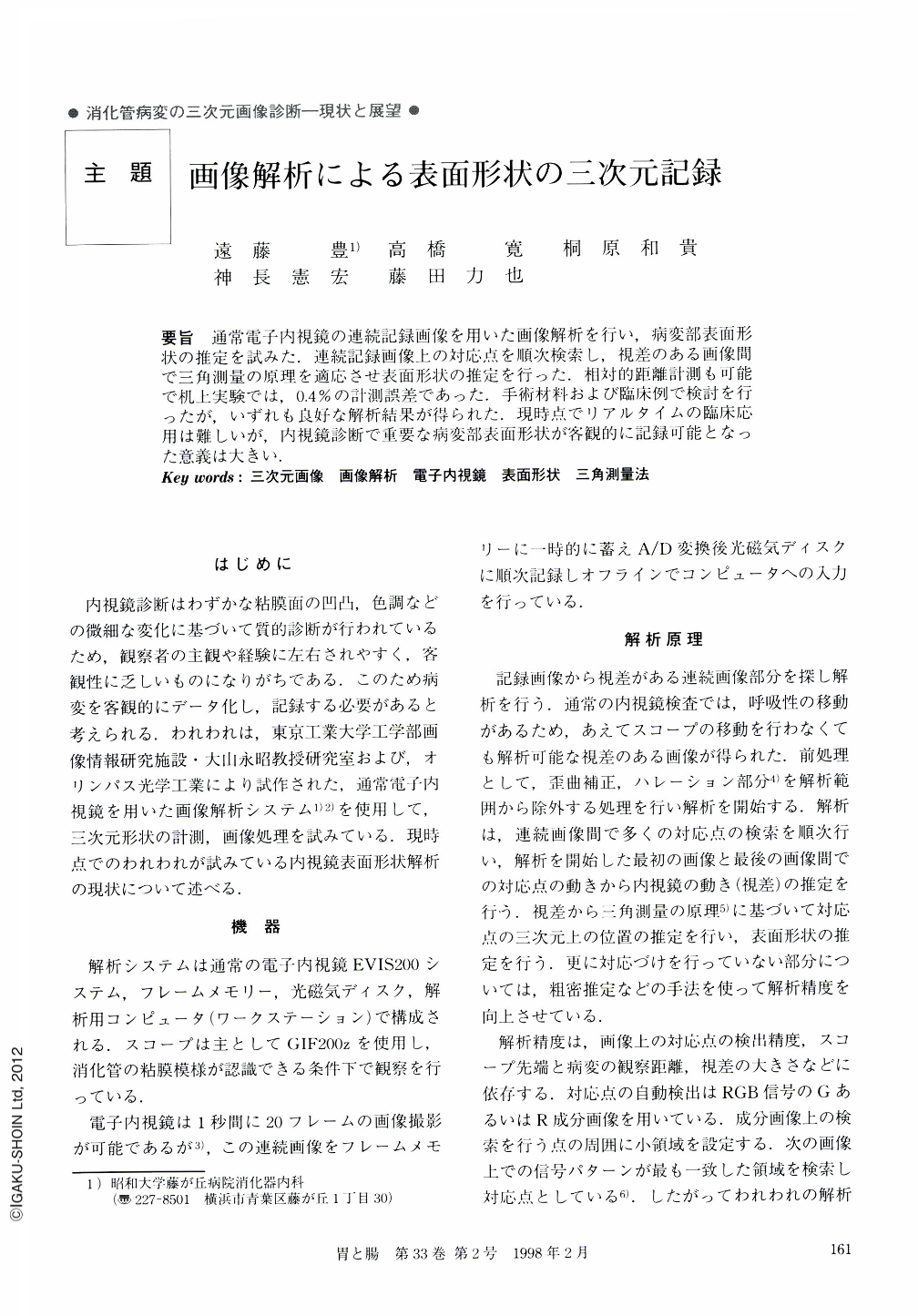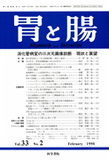Japanese
English
- 有料閲覧
- Abstract 文献概要
- 1ページ目 Look Inside
要旨 通常電子内視鏡の連続記録画像を用いた画像解析を行い,病変部表面形状の推定を試みた.連続記録画像上の対応点を順次検索し,視差のある画像問で三角測量の原理を適応させ表面形状の推定を行った.相対的距離計測も可能で机上実験では,0.4%の計測誤差であった.手術材料および臨床例で検討を行ったが,いずれも良好な解析結果が得られた.現時点でリアルタイムの臨床応用は難しいが,内視鏡診断で重要な病変部表面形状が客観的に記録可能となった意義は大きい.
We have employed a new endoscopic topological image analyzing system in collaboration with the Imaging Science and Engineering Laboratory, the Tokyo Institute of Technology and the Olympus Optical Co. Ltd. The system consists of an ordinary video endoscope system (EVIS 200), a frame memory, an A/D converter, a magnetic optical (MO) recorder and a computer (work station). This analyzing system uses endoscopic sequential images. The sequential images are firstly stored in a frame memory and then converted into a digital signal, and recorded on an MO disk. The recorded images are analyzed with a computer. The analyzing theory is as follows; firstly, matching points in the endoscopic images are detected between the continuous images after distortion correction has been made and the area of hallation is excluded. The matching points are detected serially and finally, the matching point of the first and the last image is detected. Secondly, the movement of the scope is estimated based on the triangle measurement theory, the same as that used in stereo-videoendoscopy. The parallax between the images caused by the movement of the endoscope can be determined by detecting the matching point of the first and last image. Thirdly, the shape of the lesion can be reconstructed by using the data concerning the matching points and the movement of the scope. These analyzing processes are carried out automatically by computer soft ware. To assess the acurracy of this system, we measured a polyp model (17 mm in diameter). The error was within 0.3 mm, and the superficail shape of the polyp was recorded almost perfectly. In the estimation of the shape of the formalinfixed resected stomach, the IIc type early gastric cancer was analyzed correctly. Although there is limitation in the size of the lesion which can be analyzed with this system (less than 2 cm in diameter), we could reconstruct precise 3-D images of minute gastric cancers, gastric polyps etc. Although endoscopic diagnosis greatly depends on the knowledge and the experience of the examiner, we are convinced that by this system these can be recognition of the superficial shape of a lesion, and that it is an important system that can be used for objective analysis.

Copyright © 1998, Igaku-Shoin Ltd. All rights reserved.


